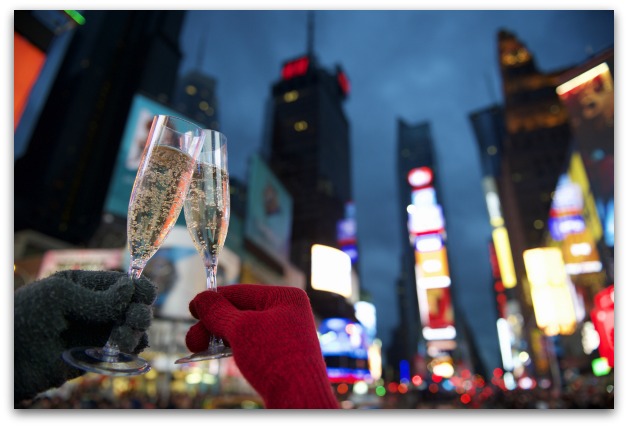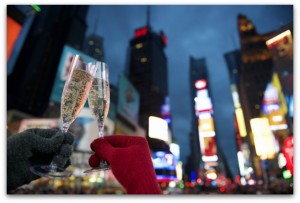With new year celebrations behind us, we dug a little deeper and learned some interesting facts about the world famous New York City’s New Year’s Eve tradition.
Adolph Ochs, the former owner of the New York Times, used to ring in the new year by hosting a fireworks show at the newspaper’s headquarters. In 1907, he decided that his annual shindig needed some more pizazz. He hired designer Artkraft Strauss, known for his elaborate Times Square signs, to create something truly special. Strauss created a large time ball that helped celebrants countdown to midnight.
- The first ball measured five feet in diameter, was covered in 100 light bulbs, and weighed around 700 pounds. Before the countdown, it was raised up the building’s flagpole by six men. As midnight approached, the ball was lowered to a trigger that activated an illuminated New Years sign and a simultaneous fireworks show.
- The show was a huge hit and, it’s occurred almost every December 31 since. In observance of blackouts during World War II the celebration was cancelled in 1942 and 1943. Today the event is organized by the Times Square Alliance and Countdown Entertainment.
- The current ball (the seventh one used overall) is much more sophisticated than the first. It’s run via a fancy computerized system and its outer surface is covered in crystal, triangle-shaped panels. Nicknamed the “Big Ball,” it weighs six tons, is 12 feet in diameter, and features 32,256 LED lights. It can create a palette of over 16 million colors and billions of individual “kaleidoscope” patterns.
- Since 2009, the Big Ball has been displayed, year round, atop the building at One Times Square.
- Around one million revelers pile into Times Square to watch the ball fall every year. The 2000 celebration drew the biggest crowd when two million people showed up to await the Y2K chaos that didn’t go down.
- This New Years Eve, the Big Ball is going to face some competition from across town. Coney Island is hosting a similar bash with fire-spitters, live music, and its own “digital” ball drop at midnight. During this countdown, LED lights will create a virtual ball that will fall down the side of the Parachute Jump, an attraction along the island’s historic boardwalk.
- Using a falling ball to indicate the passage of time dates back to 1833. That’s when England’s Royal Observatory at Greenwich added a ball that dropped at 1 p.m. every afternoon to help the captains of nearby ships check the settings on their chronometers, a navigational tool. The ball inspired at least 150 similar “time balls” around the world, with a few still operational.









